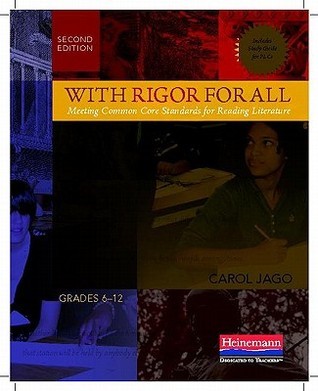What do you think?
Rate this book


"The stakes are high. Without artful instruction, many students will never acquire the literacy skills they need not only to meet Common Core Standards but also to meet the challenges this brave new world is sure to deal them."
-Carol Jago
Again and again the Common Core Standards state that students must read "proficiently and independently" but how do we achieve this when students are groaning about having to read demanding literature and looking for ways to pass the class without turning pages?
Carol Jago shows middle and high school teachers how to create English classrooms where students care about living literate lives and develop into proficient independent readers. With 50% new material, With Rigor for All, Second Edition features:
integration of the Common Core State Standards as teaching touchstones YA lit pairings with classic texts to aid comprehension for middle and high school students tips to motivate reluctant readers with immersion, encouragement, and small steps a study guide and guidelines for curriculum development.
Students need books that mirror their own experiences and if you teach literature that you love, your students will be more likely to love it too. Let Carol show you how to create an individually designed curriculum in which students read literary works of comparable quality, complexity, and range and enjoy doing it!
168 pages, Paperback
First published July 14, 2011